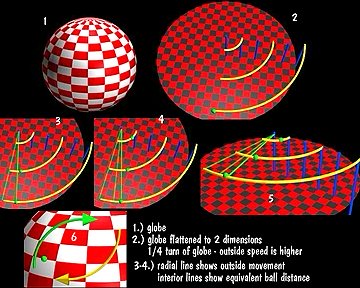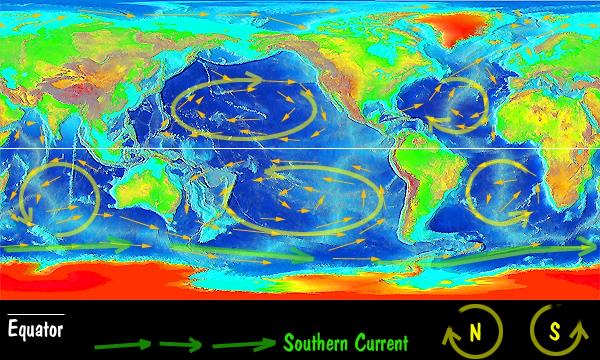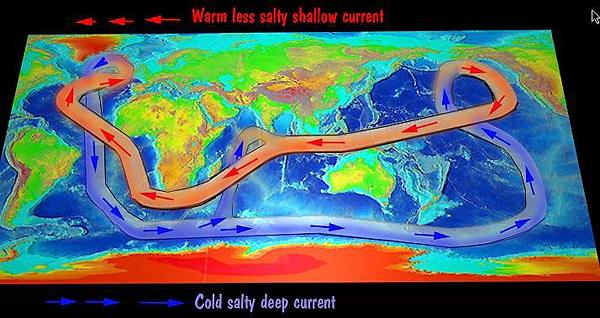What drives the oceans? Why do they move about via currents?
1.) The Coriolis Effect
2.) Heating and cooling
3.) Density differences (salt concentration)

The Coriolis effect is related to the speed at which things turn at a fixed distance. If an object is rotating at the equator it will have a maximized speed. (Speed is distance divided by time) At the poles there is effectively zero speed as there is no distance traveled at the axis.
Thus if an object starts near the equator and moves towards the north pole, it will be moving faster than the earth below as it moves north. Because the further north is moves, the slower the earth's linear velocity.
If it were moving south, away from the north pole. then it would be moving slower relative to the earth and would fall behind the linear velocity found further south.
As a result, the currents and weather patterns in the northern hemisphere tend to rotate clockwise. The precise opposite effect is found in the southern hemisphere and the weather and ocean currents are found to rotate counter clockwise.
There is an old wives-tale that says that this is the reason that drains in the northern hemisphere turn clockwise and those in the southern hemisphere drain in the counter clockwise direction. Unfortunately the speed differential across the width of a drain opening is so small as to be neglectable and in fact has no effect on the drains, toilets or other small bodies.

Heat and density effects work in the same general way. When something is cooler it is more dense and when it is warmer it is less dense. We have already experienced this in many chapters as we have seen hot magma move upward buoyed by lower density.
The oceans do much the same, warmer water moves upward and cooler water sinks. Coupled with this there is also a salinity difference. Water at any given temperature will have higher density if it contains more salt.
Thus cold saline water will sink further than cold fresh water.


| NEXT | TOC | PREV |